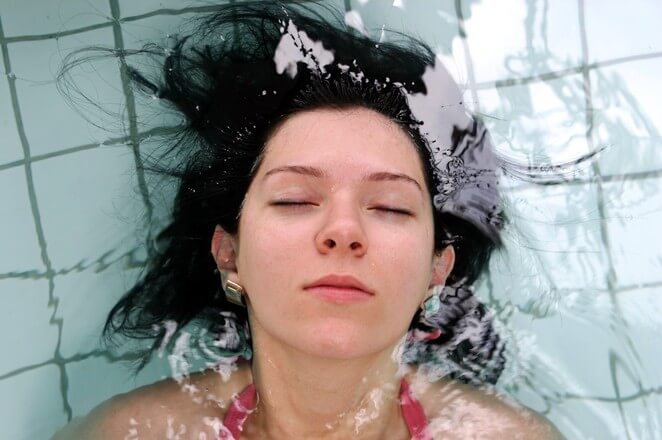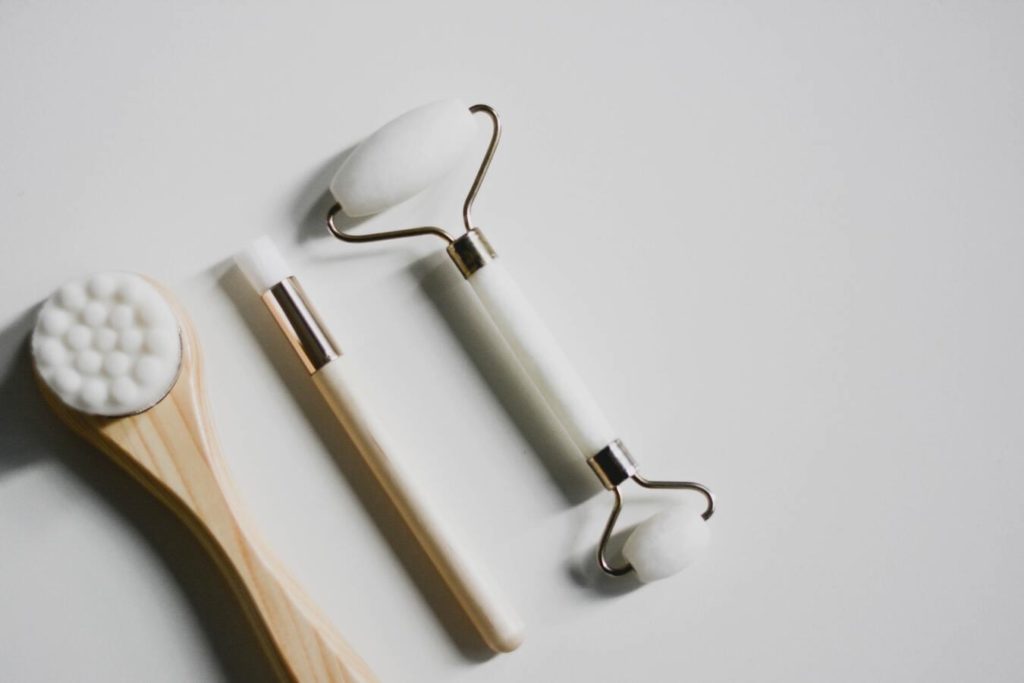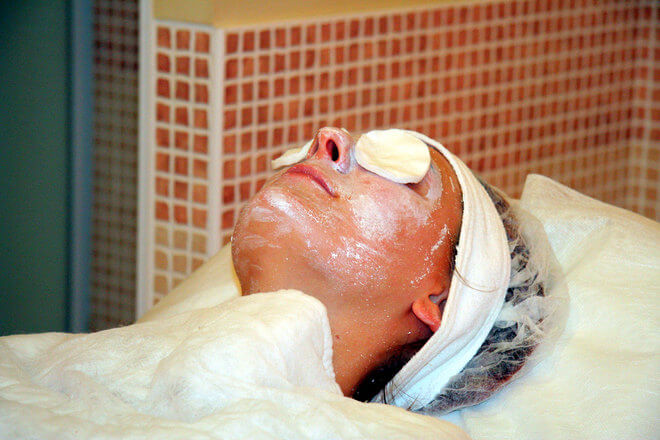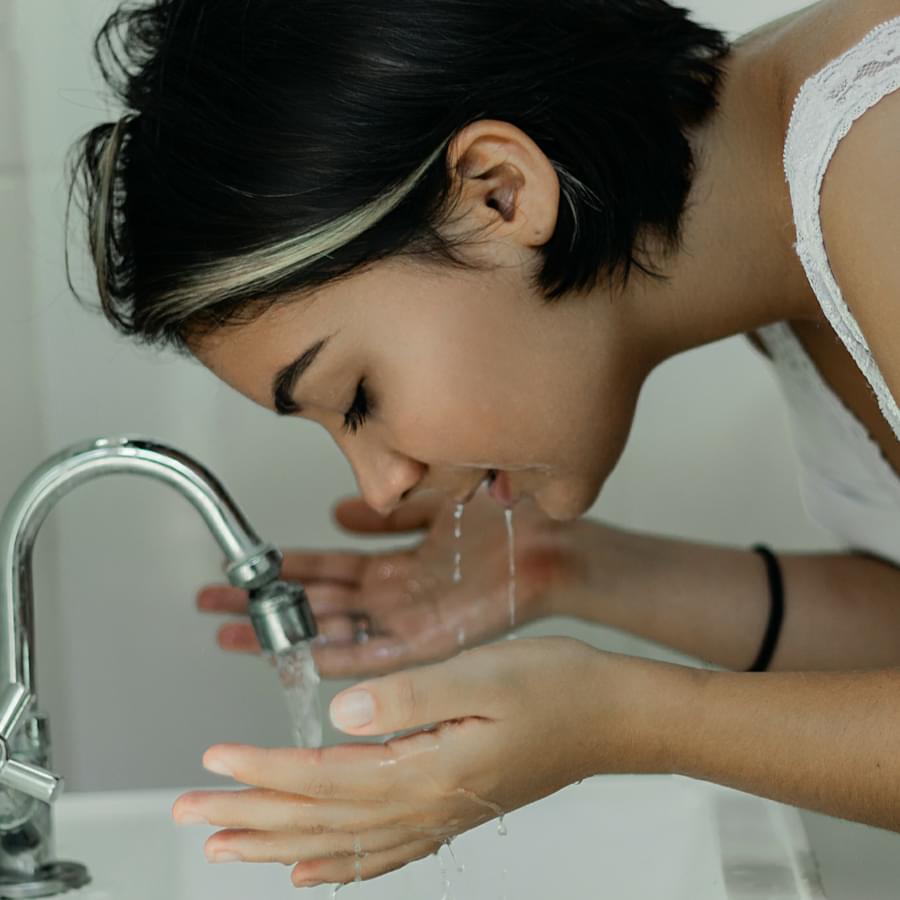Whether your skin is oily just in summer or year-round, it’s essential to take good care of your skin.
Besides general advice like eating well, getting enough sleep, managing stress, and protecting yourself from the sun, there are several tips you can follow to keep your skin looking great. Before going deeper into how to take care of oily skin, let’s see what causes it in the first place.
What Causes Oily Skin?
OK, so why is my face oily? Actually, oily skin is the result of your skin producing excess sebum or oil. You need a certain amount of sebum to keep your skin healthy. Still, too much of it can settle in your pores and, along with dead skin cells, create a breeding ground for bacteria, causing acne. As your oil glands are more active, your pores may also appear larger.

Oily skin can be caused by hormones, menstrual cycle, the weather, diet but is often genetic. Before wondering how to get rid of oily skin, please understand that actually, there is nothing intrinsically wrong with this skin type. However, taking good care of it is needed.
5 Fundamental Steps Helping To Take Care Of Oily Skin
Step 1: Cleansing
Firstly, cleansing is an essential component of any skincare routine. You should wash your face in a warm water bath in the morning and at night. A good cleanser will remove any dirt, makeup, or grime from the skin. The number one thing to take away about cleansers for oily skin is that you don’t want to use a cleanser that is too harsh.
While drying out your skin may give you the idea that your oiliness has gone away, this will only result in the production of even more oil, further creating unwanted shine or clogging and enlarging pores.
In short, more oil is the last thing you want, so great care needs to be taken to use a gentle cleanser.
Many of us have been lead to believe that a tight, drying or tingling sensation means that we’ve done a successful job cleansing, but this is actually what you want to avoid. If your skin feels tight, all the moisture has been stripped. If your skin is tingling, this means the cleanser is too harsh as well. When using the right cleanser, your skin should feel clean and refreshed but not dehydrated.
If a gentle cleanser isn’t helping with your oiliness, use a product that contains benzoyl peroxide, salicylic acid, or glycolic acid. While these ingredients are primarily used to fight acne, those with oily skin may benefit.
Be sure not to use too high of a percentage of any of these ingredients. Try a couple of options until you find the best – not everyone’s skin reacts in the same way to all ingredients.

Lastly, when purchasing a cleanser, avoid the following ingredients: sulfates like Sodium Laureth Sulfate, fragrance, or alcohol.
Sulfates are detergents commonly found in soaps, toothpaste, and face washes. They can be too drying for sensitive skin, even though they are found in most mainstream skincare products.
Secondly, many fragrances are common allergens and known skin irritants. If you have sensitive or acne-prone skin, it’s best to avoid fragrance altogether.
Keep in mind that products containing alcohol may be used to spot-treat acne, but using a cleanser with alcohol on your entire face is a major no-no.
Don’t over-cleanse. If your skin seems oily in the middle of the day, use blotting paper to gently dab at your oily zones. If you wash your face more than two times a day, it will only result in more oil production.
If you wear a lot of makeup, you might want to consider removing your makeup with an oil cleanser before proceeding with your regular cleanser. This way, you can make sure that you’ve removed all of your makeup without drying out your skin.
Step 2: Use Toner (Optional)
A toner is an additional water-based step to the cleansing process. Toner can do a lot of things: eliminate any dead skin cells, oils, or dirt your cleanser may have missed, balance your skin’s pH level, gently exfoliate, add antioxidants, prep your face for a moisturizer, and soothe your skin.
As someone with oily skin, you’ll need to be very picky about what toner you put on your face. Many toners are formulated with alcohol, menthol, or other extremely drying ingredients. You won’t want anything overly fragrant like peppermint or citrus oils, either. Instead, find a toner that includes soothing and hydrating ingredients.
After using your cleanser, apply your toner to your face, neck, and chest with a soft cotton round. Avoid applying toner to any dryer areas you might have. You can dab off any excess toner with a tissue, but don’t rinse your face! Proceed to moisturize as normal after letting the toner dry.
Step 3: Gently exfoliate
Exfoliation is the process of removing the accumulation of dead skin cells. This is especially beneficial for those with oily face since dead skin cells can build up and clog pores. There are two types of exfoliators: physical and chemical.
You can physically exfoliate by using a scrub or a washcloth. On the other hand, chemical exfoliants will get deeper into the upper layer of the skin than physical exfoliants. They won’t cause tiny tears in your skin like scrubs can. They are commonly thought of to be gentler than chemical exfoliants.
If you have oily skin, avoid scrubbing your skin with a washcloth. This can actually stimulate more oil production. Instead, try an exfoliating solution containing salicylic acid. This will clear out your pores (something a physical exfoliant could never do!) without overwhelming your skin.
This is not an everyday step for your routine: do not exfoliate more than once a week.
Step 4: Moisturize
While this may seem counter-productive, people with oily face really do need to moisturize. Oil does NOT equal hydration, and skipping moisturizer can cause your skin to feel dehydrated and produce even more oil, which is the last thing we want.
You’ll want to find your best moisturizer that doesn’t clog your pores, so look for something with the words “non-comedogenic” or “oil-free” on the label. A lightweight moisturizer is great for everyday use, but let a heavier moisturizer sink in at night.
Step 5: Use A Face Mask (optional)
If you aren’t already cleansing, exfoliating gently, and moisturizing, try to incorporate those critical steps in your routine before trying a mask. If you still have problems with oiliness, apply a mask before moisturizing.

Using a mask once or twice a week is a great way to really keep oil under control. Clay masks are great for soaking up oil, and they aren’t too expensive. The masks are fantastic as long as they aren’t too drying. So, don’t leave them on for too long and only apply to your oiliest areas (never on your under-eye area!).
Don’t wait for the clay mask to dry entirely – rinse it when it’s dried a little but is still a bit tacky or sticky to the touch. Other masks like oil-free sheet masks and gel masks can add some extra hydration to your routine.
